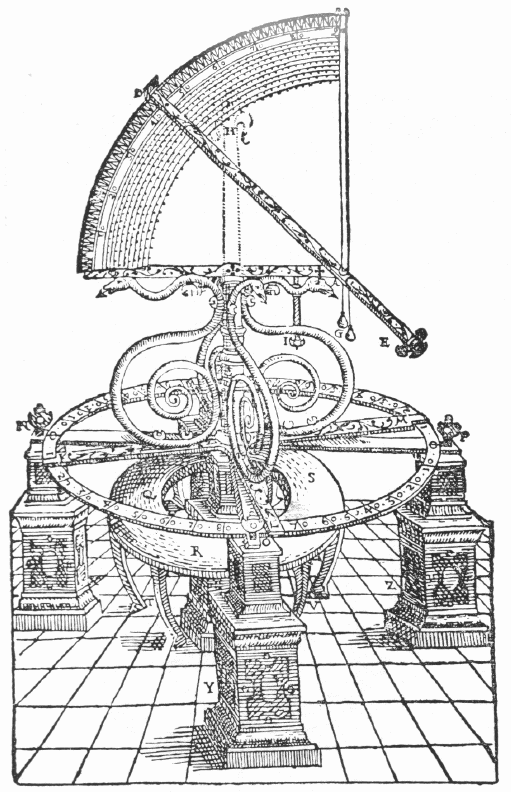

Quadrant Astrolabe
What is a Quadrant Astrolabe?
The quadrant astrolabe was used to determine the altitude of celestial objects and was especially helpful in mapping the skies.
What is special about this astronomical instrument?
A quadrant astrolabe is an instrument that is used to measure angles up to 90°, unlike other versions of the astrolabe where they can measure angles up to 360°.
Morphology

Dimensions
The size of a quadrant astrolabe can vary depending on the type of quadrant. It can be as large as 4 meters (13.1234 feet) in height or as small ranging from 130 to 140 mm (5.11811 to 5.51181 inches) in length.
Physico-chemical properties
Quadrant astrolabes are quarter-circle panels made of wood or brass. The markings may be printed on paper and pasted to the wood or painted directly onto the surface. Markings on brass instruments are usually engraved.
Anatomy
The astrolabe-quadrant is a variant of the planispheric astrolabe, reduced to a quarter circle thanks to a double folding of the stereographic projection and without a rete. Its functions remain identical: a portable astronomical measuring instrument, it simulates the movement of the celestial sphere in relation to the reference terrestrial sphere, in order to solve spherical astronomy problems by combining geometry and trigonometry: it allows the measurement of altitude, latitudes and longitudes, direction of Mecca, or time of day and night. Easy to make and inexpensive, the astrolabe-quadrant is however complex to handle. Each instrument is only valid for one latitude. Astrolabes-quadrants were used in the Muslim world until the beginning of the 20th century. We know of examples in the Maghreb of the 18th century and in the Ottoman Balkans.
Utilisation

Method for measuring the height of an object:
1. Locate the top of the object you are measuring.
2. Examine the object from the top using the sight tube.
3. Check the angle measurement on the astrolabe.
4. Approach the object that you wish to measure.
5. Check if the angle is above or under 45°.
6. Move farther away from the object if it is taller than 45°, and closer if it is smaller than 45°.
7. Measure the distance to the object being measured when the astrolabe reads 45 degrees.
8. Measure the distance from the observers eye to the ground.
9. This distance should be added to the distance from spot 45° to the building..
10. When these two measurements are added together, the approximate height of the object is determined.
How to locate your latitude:
1. Find Polaris in the night sky.
2. View Polaris through the sight tube.
3. Check the astrolabe's angle measurement.
4. There you have it, your latitude.
History

Around AD 150 (Anno Domini), Ptolemy's Almagest mentions a quadrant instrumennt for the first time. A "plinth" he described was able to measure the altitude of the noon Sun by projecting a peg's shadow on a graduated arc of 90 degrees. In contrast to later versions of the instrument, this quadrant was larger and had more moving parts. In Ptolemy's version, a rudimentary astrolabe was used to measure the angle of the meridian.
In the Middle Ages, Islamic astronomers built observatories such as Marageh, Rey, and Samarkand with quadrants based on these ideas. Initially, these quadrants were very large and stationary, and they could be rotated to any bearing to provide both azimuth and altitude. In the Middle Ages and beyond, Islamic astronomers developed four different types of quadrants based on advances in astronomical theory and observational accuracy. Muhammad ibn Musa al-Khwarizmi invented the sine quadrant in Baghdad's House of Wisdom in the 9th century. Astrolabe quadrants, universal quadrants, and horary quadrants were the others.
Author: William Homier
Editor: William Homier
This page was last edited on 11 April 2022, at 19:45 (HAE).
Sources:

